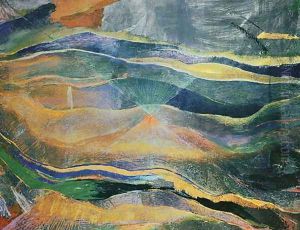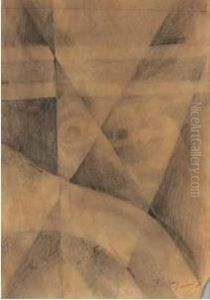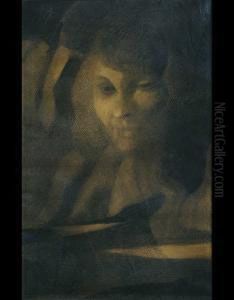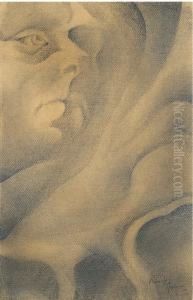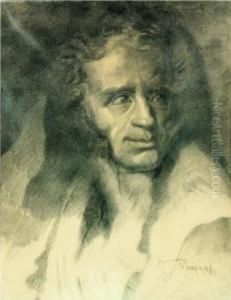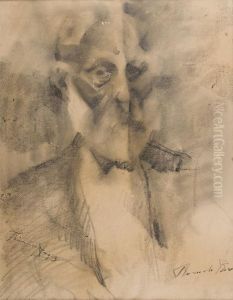Romolo Romani Paintings
Romolo Romani was an influential Italian painter and sculptor, whose work left a lasting impact on the art world in the early 20th century. Born in 1884 in Cremona, Italy, Romani grew up in an era where art was beginning to undergo significant transformations, moving away from classical traditions towards more modern and experimental forms. His early life was steeped in the rich cultural heritage of Italy, which would later influence his artistic endeavors. Romani received his formal art education at the Brera Academy in Milan, one of Italy's most prestigious art schools, where he was exposed to a variety of artistic movements and techniques. This education laid the groundwork for his diverse artistic style that would encompass elements of Symbolism, Expressionism, and later, aspects of Futurism.
Throughout his career, Romani was known for his bold use of color and dynamic compositions, which often explored themes of human emotion, mythology, and social commentary. His paintings and sculptures were characterized by a strong emotional intensity, a feature that set him apart from many of his contemporaries. Romani was deeply influenced by the Symbolist movement, which sought to express the invisible or intangible through visible forms. He often infused his works with symbolic elements that hinted at deeper meanings, inviting viewers to look beyond the surface.
In addition to his artistic achievements, Romani played a significant role in the cultural life of Italy during his time. He was involved in several artistic communities and exhibited his work widely, both in Italy and abroad, gaining recognition and acclaim. His contributions to art were not limited to his own creations; he was also a passionate educator, imparting his knowledge and skills to a new generation of artists as a professor at the Brera Academy, where his journey had begun.
Romani's work evolved over the years, reflecting the changing currents of the art world and his own personal development. In the later stages of his career, he experimented with Futurism, an avant-garde movement that emphasized speed, technology, and modernity, which marked a significant departure from his earlier, more introspective work. Despite this evolution, his commitment to exploring the depths of human experience remained constant.
Romolo Romani's life was cut short when he passed away in 1939, but his legacy endures through his art, which continues to captivate and inspire. His ability to blend traditional techniques with innovative ideas made him a pivotal figure in the transition from 19th-century art to the modernist movements of the 20th century. Romani's work is celebrated for its emotional depth, technical mastery, and visionary approach, securing his place in the annals of art history as a remarkable and transformative artist.
